Abstract
The economy of functioning of the developing fruit of white lupin (Lupinus albus L.) is assessed quantitatively in relation to intake and usage of carbon, nitrogen, and water. Of every 100 units of carbon imported from the parent plant, 52 are incorporated into seeds, 37 into nonmobilizable material of the pod, and the remaining 11 lost as CO2 to the atmosphere. An illuminated fruit can make net gains of CO2 from the atmosphere during the photoperiods of all but the last 2 weeks of its life, suggesting that it is active in assimilation of CO2 respired from pods and seeds. This conservation activity is important to carbon economy.
Phloem supplies 98% of the fruit's carbon and 89% of its nitrogen. Most of the xylem's contribution enters early in development. Xylem and phloem supply similar sets of amino compounds, amides predominating. Ninety-six per cent of the fruit's nitrogen becomes incorporated into seeds. Sixteen per cent of the seed's nitrogen is mobilized from the senescing pod.
The transpiration ratio of the fruit is 22.5 ml per gram dry matter accumulated. Xylem supplies 60% of a fruit's total water requirement and the equivalent of two-thirds of its transpiration loss. Phloem becomes prominent as a water donor once the seeds start to fill.
The fruit exhibits a 31% conversion by weight of organic imports into food reserves of seeds. This entails an intake through vascular channels of 1756 mg sucrose and 384 mg amino compounds and an accumulation in seeds of 412 mg protein, 132 mg oil, and 110 mg perchloric acid-soluble carbohydrate.
Full text
PDF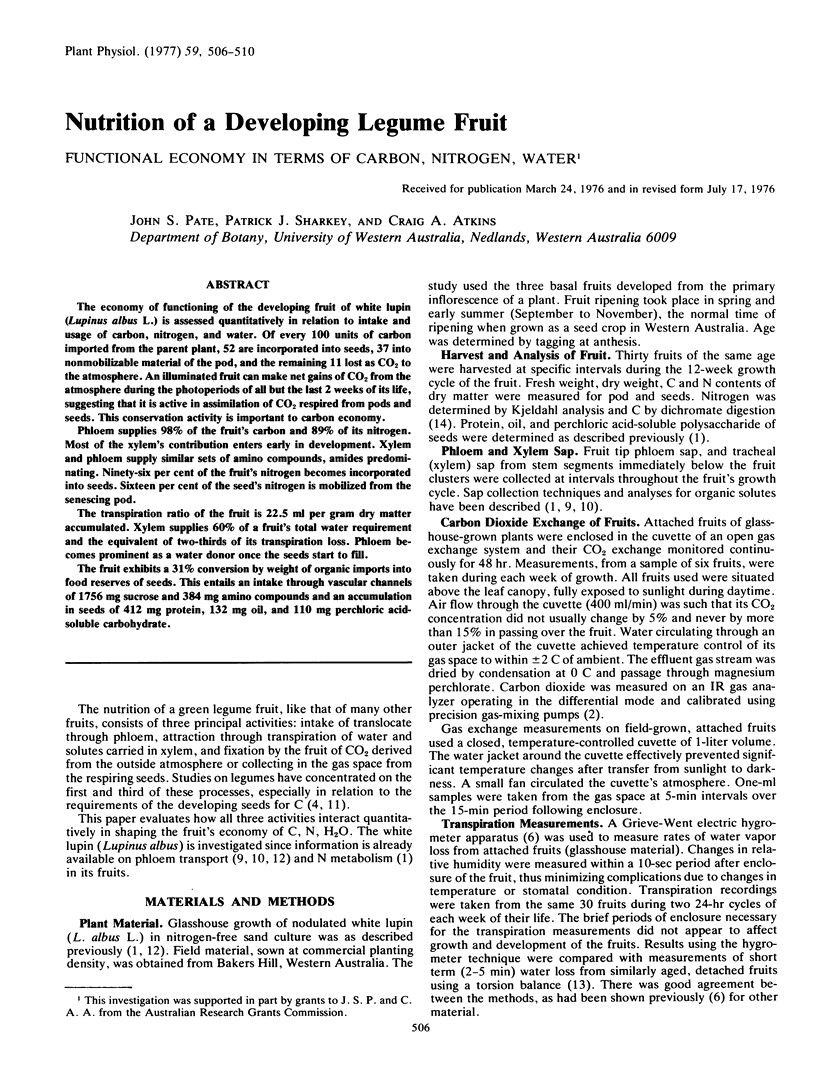
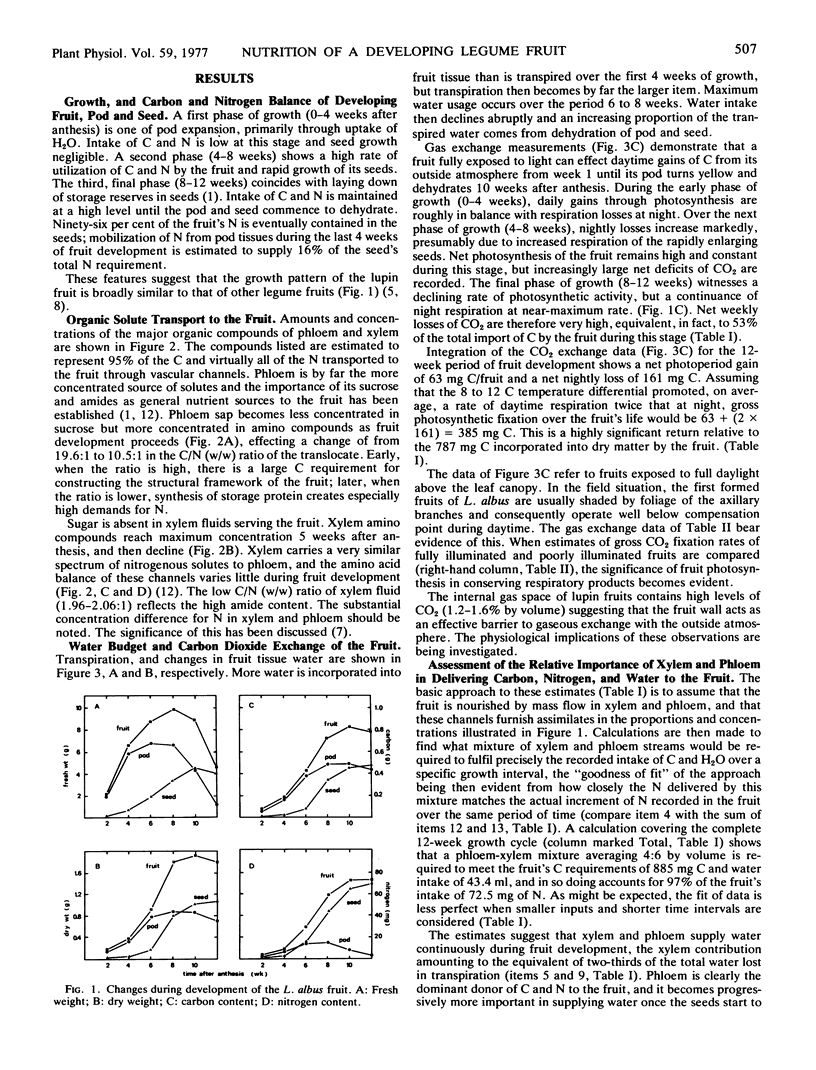
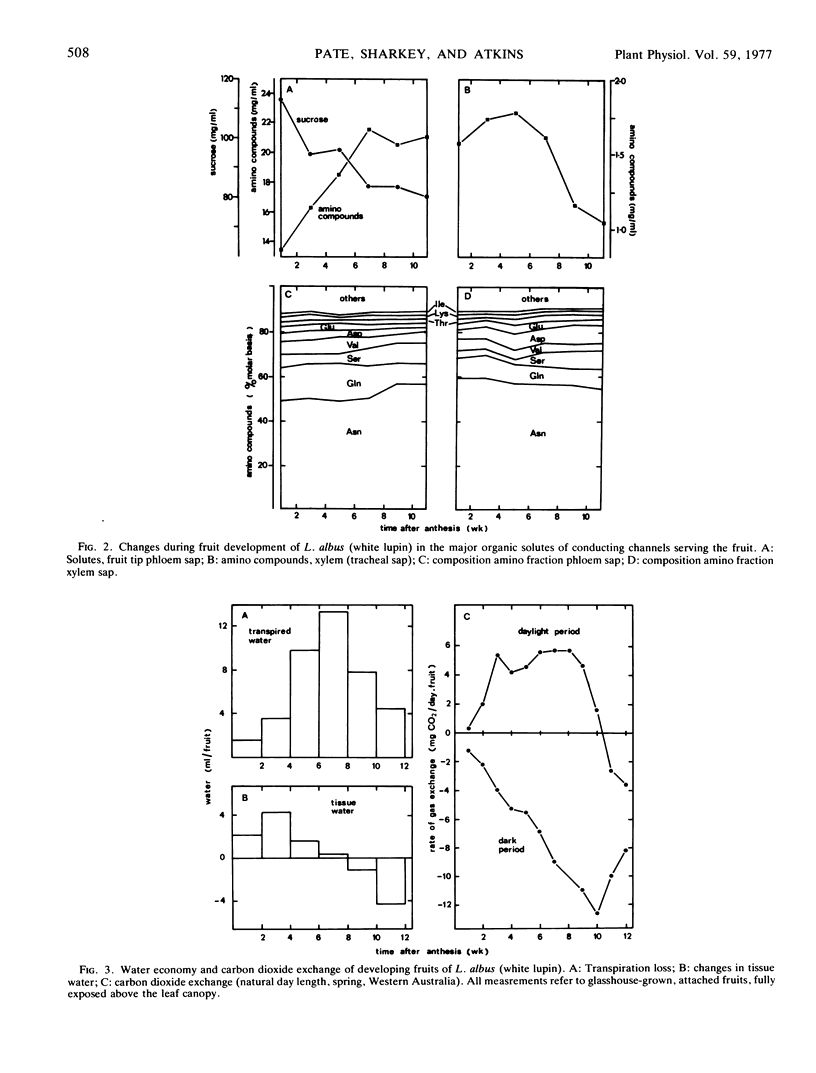
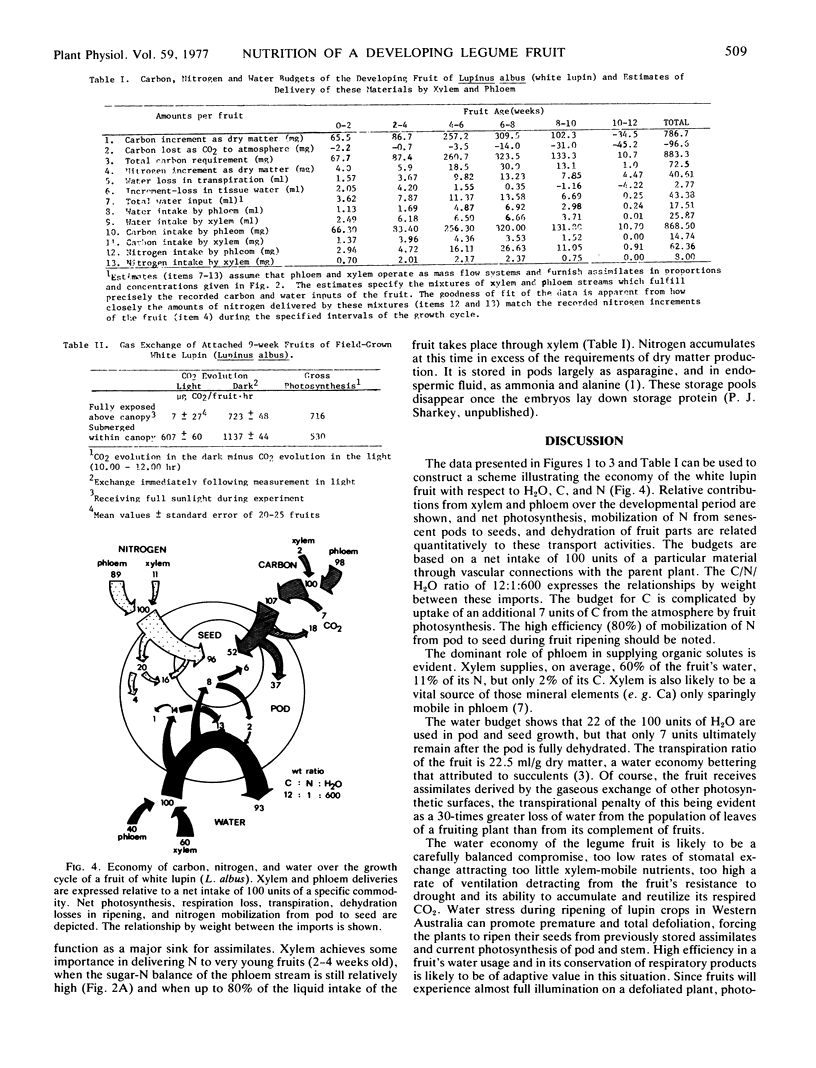
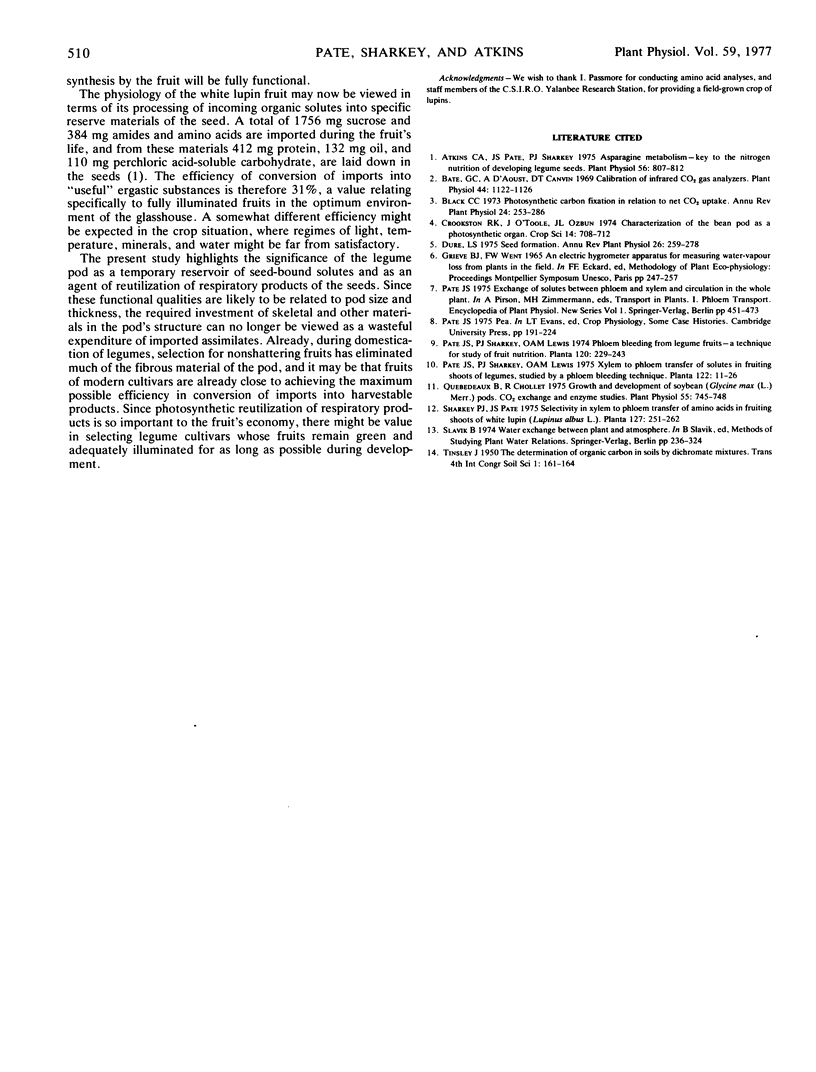
Selected References
These references are in PubMed. This may not be the complete list of references from this article.
- Atkins C. A., Pate J. S., Sharkey P. J. Asparagine metabolism-key to the nitrogen nutrition of developing legume seeds. Plant Physiol. 1975 Dec;56(6):807–812. doi: 10.1104/pp.56.6.807. [DOI] [PMC free article] [PubMed] [Google Scholar]
- Bate G. C., D'Aoust A., Canvin D. T. Calibration of Infra-red CO(2) Gas Analyzers. Plant Physiol. 1969 Aug;44(8):1122–1126. doi: 10.1104/pp.44.8.1122. [DOI] [PMC free article] [PubMed] [Google Scholar]
- Quebedeaux B., Chollet R. Growth and Development of Soybean (Glycine max [L.] Merr.) Pods: CO(2) Exchange and Enzyme Studies. Plant Physiol. 1975 Apr;55(4):745–748. doi: 10.1104/pp.55.4.745. [DOI] [PMC free article] [PubMed] [Google Scholar]


